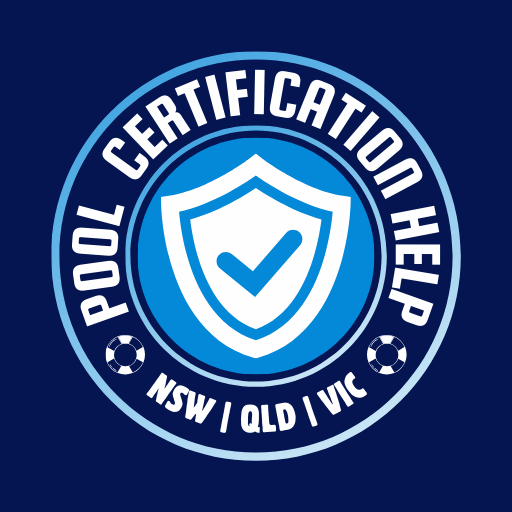CPR and Warning Signs: Do You Have the Right CPR Signage?
June 26, 2025

When it comes to swimming pools in Australia, safety isn’t just about fences and gates, it’s also about what you can do in an emergency. That’s where CPR signage comes in. Displaying a clear, compliant Cardiopulmonary Resuscitation (CPR) sign is not only strongly recommended, but legally required in most Australian states and territories.
In this article, we explain the legal requirements, placement rules, and compliance tips for CPR signage, so you can ensure your pool area meets the Australian Pool Safety Standards and avoid unnecessary inspection failures or fines.
Why Is CPR Signage Required?
The inclusion of Cardiopulmonary Resuscitation (CPR) instructions within a pool or spa enclosure is designed to assist in an emergency. In situations where a child or adult is found unconscious or submerged, a clearly visible CPR sign provides immediate guidance that can be followed while waiting for emergency services.
The presence of accurate, up-to-date CPR instructions is part of a larger safety framework aimed at reducing preventable drownings. Given the life-threatening nature of pool-related incidents, authorities across Australia have made CPR signage a legal requirement in conjunction with pool barriers, gates, and non-climbable zones.
National Standards and State Legislation about CPR Signages
In Australia, CPR signage requirements are outlined in Australian Standard AS1926.1–2012, which is widely adopted across multiple states. Additionally, specific state regulations apply, reinforcing the need for clarity and consistency across different jurisdictions.
Summary of Requirements by State:
- New South Wales: Required under the Swimming Pools Regulation 2018. CPR signs must comply with current Australian Resuscitation Council (ARC) guidelines.
- Queensland: CPR signage is compulsory under QDC MP 3.4 – Pool Safety Standard. The sign must be durable, clearly displayed, and show up-to-date CPR steps.
- Victoria: Under the Building Regulations 2018, a CPR sign must be displayed within the pool or spa area and meet national safety guidelines.
- Western Australia, South Australia, and others: Most have adopted AS1926.1 standards in some form, and CPR signage is either recommended or mandated depending on council laws.
What Makes a Pool CPR Sign Compliant?
To comply with AS1926.1–2012, and by extension most local regulations, a CPR sign must meet the following criteria:
Size and Material:
- Minimum dimensions of 300 mm x 300 mm
- Constructed from a durable, weather-resistant material
- Designed to be UV stable, particularly if located in direct sunlight
Content Requirements:
- CPR steps must follow the latest ARC Guidelines
- Must include clear, easy-to-read instructions
- Visual diagrams and bold headings are encouraged for quick readability
Placement:
- The sign must be located inside the pool or spa area
- It must be clearly visible from any part of the enclosure
- It cannot be obstructed by plants, furniture, fencing panels, or equipment
Signs mounted outside the pool area, on external walls, or behind obstacles are unlikely to be considered compliant during an official inspection.
Where to Install CPR Signage
Correct placement of CPR signage is just as important as its content. Inspectors routinely fail barriers due to signs being installed incorrectly.
Best Practices:
- Mount the sign within the fenced area of the pool or spa
- Install it at an accessible height, typically between 1200 mm and 1600 mm from ground level
- Ensure it is not blocked by posts, vegetation, or other structures
- Position it near the entry gate or a commonly used access point
In larger pool areas, consider placing more than one sign to ensure visibility from all angles.
Does Every Pool or Spa Require a CPR Sign?
Yes! In jurisdictions where CPR signage is legally required, it applies to all swimming pools and spas capable of holding more than 300 mm (30 cm) of water. This includes:
- Permanent in-ground and above-ground pools
- Portable or inflatable pools
- Swim spas and hot tubs
- Temporary pools used for extended periods
Even if the pool is locked, covered, or in an enclosed building, the signage requirement still applies.
Choosing the Right CPR Sign for Your Pool
To ensure full compliance, it’s best to purchase CPR signage from authorised suppliers or safety retailers that specifically label their products as compliant with:
- AS1926.1–2012
- Australian Resuscitation Council (ARC) Guidelines
- State and local pool safety laws
Avoid generic signs, small stickers, or non-standard materials that are not designed for long-term outdoor use.
Preparing for Inspection: Checklist for CPR Signage
Before your pool or spa is inspected, double-check the following:
- CPR sign is installed within the pool area
- Sign is clearly visible and not blocked by anything
- Dimensions are at least 300 mm x 300 mm
- Material is weatherproof and UV resistant
- Instructions follow the latest ARC guidelines
- Text and visuals are clear and easy to understand
Taking a few minutes to confirm these details can prevent an otherwise compliant pool from failing its inspection over a simple signage issue.
Final Thoughts
CPR signage is more than a formality, it’s a vital safety feature and a legal requirement for swimming pool and spa owners across much of Australia. By understanding what’s expected under the Australian Standard AS1926.1–2012, and making sure your signage is both correct and properly displayed, you’re not only meeting your compliance obligations, you’re also helping to protect lives.
If you’re unsure whether your current CPR sign is up to standard or need help preparing for an inspection, contact a licensed pool safety inspector in your area. A small adjustment today can make all the difference in an emergency, and help you pass your compliance inspection the first time.
Pool Certification Help
